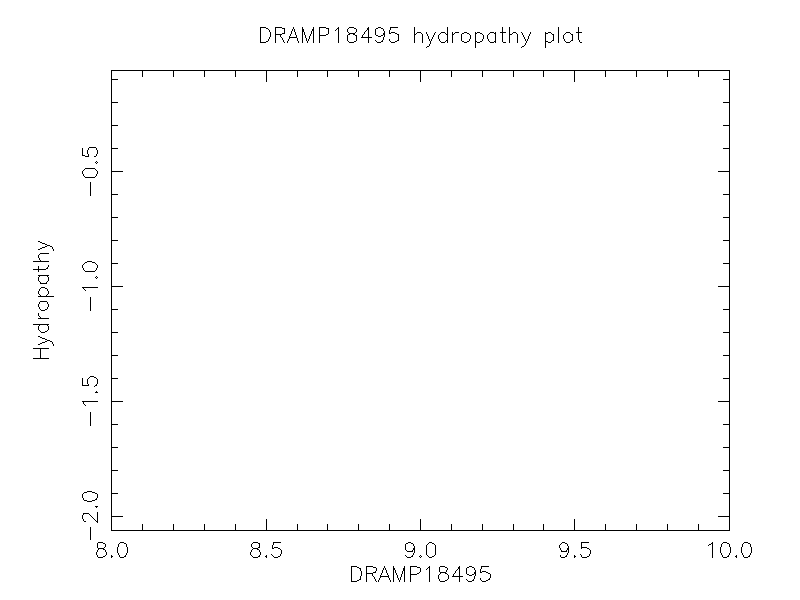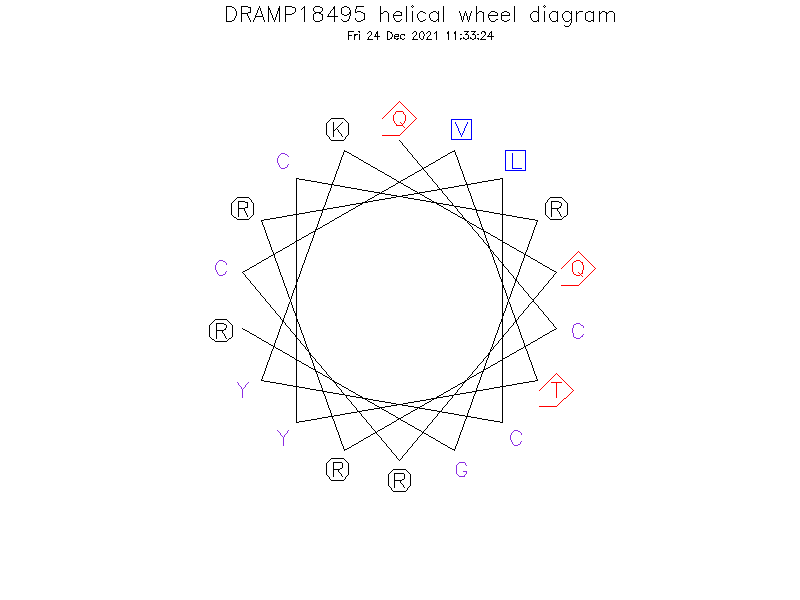General Information
-
DRAMP ID
- DRAMP18495
-
Peptide Name
- Gomesin (Gm; Spiders, arachnids, Chelicerata, arthropods, invertebrates, animals)
-
Source
- Acanthoscurria gomesiana (Tarantula spider) (Phormictopus pheopygus)
-
Family
- Belongs to the tachyplesin family
-
Gene
- Not found
-
Sequence
- QCRRLCYKQRCVTYCRGR
-
Sequence Length
- 18
-
UniProt Entry
- P82358
-
Protein Existence
- Protein level
Activity Information
-
Biological Activity
- Antimicrobial, Antibacterial, Anti-Gram+, Anti-Gram-, Antifungal, Antiparasitic, Antimalarial, Antic
-
Target Organism
-
- [Ref.10942757] Gram-positive bacteria: Aerococcus viridans (MIC=0.8-1.6 μM), Bacillus cereus (MIC=6.25-12.5 μM), Bacillus megaterium (MIC=0.2-0.4 μM), Bacillus thuringiensis (MIC=1.6-3.15 μM), Enterococcus faecalis (MIC=6.2-12.5 μM), Listeria monocytogenes (MIC=0.8-1.6 μM), Micrococcus luteus (MIC=0.4-0.8 μM), Pediococcus acidolacrici (MIC=3.15-6.25 μM), Staphylococcus aureus (MIC=1.6-3.15 μM), Staphylococcus epidermidis (MIC=0.8-1.6 μM), Staphylococcus haemolyticus (MIC=0.8-1.6 μM), Staphylococcus saprophyticus (MIC=0.8-1.6 μM), Streptococcus pyogenes (MIC=1.6-3.15 μM), Nocardia asteroides (MIC=1.6-3.15 μM);
- Gram-negative bacteria: Escherichia coli 1106 (MIC=0.8-1.6 μM), Escherichia coli D22 (MIC=0.4-0.8 μM), Escherichia coli D31 (MIC=0.8-1.6 μM), Escherichia coli SBS363 (MIC=0.4-0.8 μM), Erwinia carolovora (MIC=3.15-6.25 μM), Enterobacter cloacae β12 (MIC=3.15-6.25 μM), Klebsiella pneumoniae (MIC=3.15-6.25 μM), Pseudomonas aeruginosa (MIC=1.6-3.15 μM), Salmonella thyphinurium (MIC=0.8-1.6 μM), Xhantomonas campestris pv. orizae (MIC=3.15-6.25 μM);
- Fungi: Alternaria brassicola (MIC=0.4-0.8 μM), Aspergillus fumigatus (MIC=1.6-3.15 μM), Beauveria bassiana (MIC=12.5-25 μM), Fusarium culmorum (MIC=0.4-0.8 μM), Fusarium oxysporum (MIC=0.4-0.8 μM), Neurospora crassa (MIC=0.4-0.8 μM), Nectria haematococca (MIC=0.2-0.4 μM), Tricoderma viridae (MIC=0.4-0.8 μM), Tricophvton mentagrophytes (MIC=0.8-1.6 μM);
- Yeasts: Candida albicans (MIC=0.15-0.3 μM), Candida glabrata (MIC=12.5-25 μM), Candida tropicalis (MIC=3.15-6.25 μM), Cryptococcus neoformans (MIC=0.8-1.6 μM), Saccharomyces cerevisiae (MIC=1.6-3.15 μM).
-
Hemolytic Activity
-
- [Ref.10942757] It exhibits 16% hemolysis at 1 μM and 100 μM against human erythrocytes
-
Cytotoxicity
- No cytotoxicity information found in the reference(s) presented
-
Binding Target
- Not found
Structure Information
-
Linear/Cyclic
- Cyclic
-
N-terminal Modification
- pyroglutamic acid
-
C-terminal Modification
- Amidation
-
Nonterminal Modifications and Unusual Amino Acids
- Disulfide bond between Cys2 and Cys15,Cys6 and Cys11.
-
Stereochemistry
- L
-
Structure
- Beta sheet
-
Structure Description
- Not found
-
Helical Wheel Diagram
-
PDB ID
- 1KFP resolved by NMR.
-
Predicted Structure
- There is no predicted structure for DRAMP18495.
Physicochemical Information
-
Formula
- C93H158N36O24S4
Absent Amino Acids
- ADEFHIMNPSW
Common Amino Acids
- R
Mass
- 2292.74
PI
- 9.93
Basic Residues
- 6
Acidic Residues
- 0
Hydrophobic Residues
- 2
Net Charge
- +6
-
Boman Index
- -7906
Hydrophobicity
- -1.061
Aliphatic Index
- 37.78
Half Life
-
- Mammalian:0.8 hour
- Yeast:10 min
- E.coli:>10 hour
Extinction Coefficient Cystines
- 3230
Absorbance 280nm
- 190
Polar Residues
- 8
DRAMP18495

Comments Information
Function
- Antimicrobial activity against Gram-positive bacteria, Gram-negative bacteria and fungi. It shows hemolytic activity.
Tissue specificity
- In hemocytes only, but not in all hemocytes observed.
Literature Information
- ·Literature 1
-
Title
- Isolation and characterization of gomesin, an 18-residue cysteine-rich defense peptide from the spider Acanthoscurria gomesiana hemocytes with sequence similarities to horseshoe crab antimicrobial peptides of the tachyplesin family.
-
Pubmed ID
- 10942757
-
Reference
- J Biol Chem. 2000 Oct 27;275(43):33464-70.
-
Author
- Silva PI Jr, Daffre S, Bulet P.

